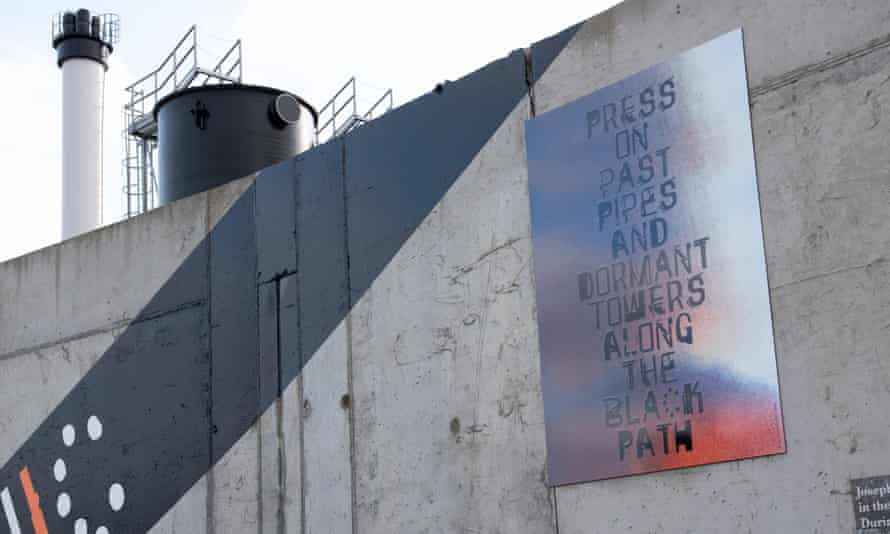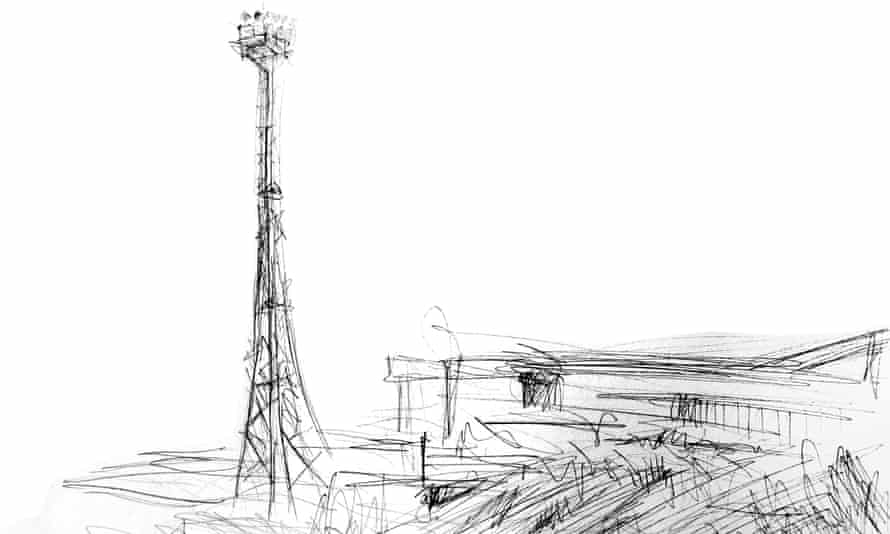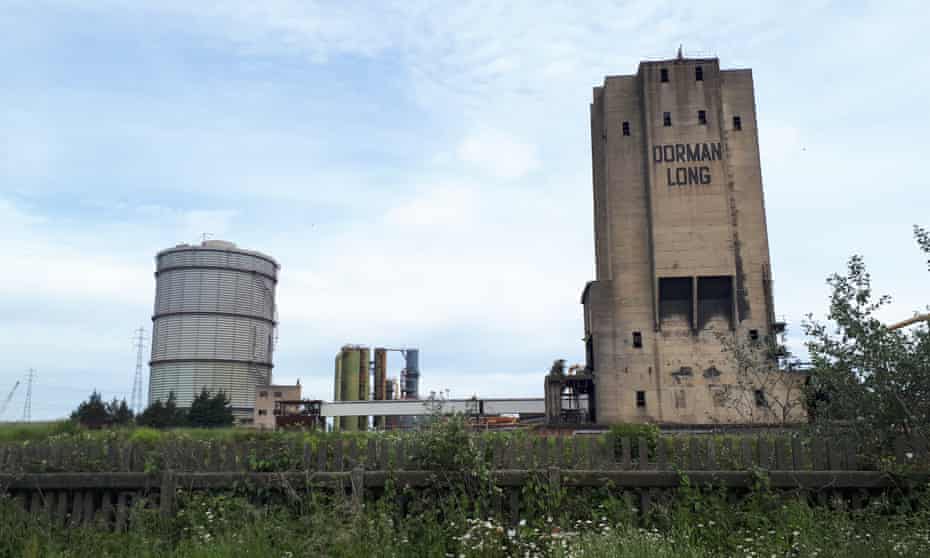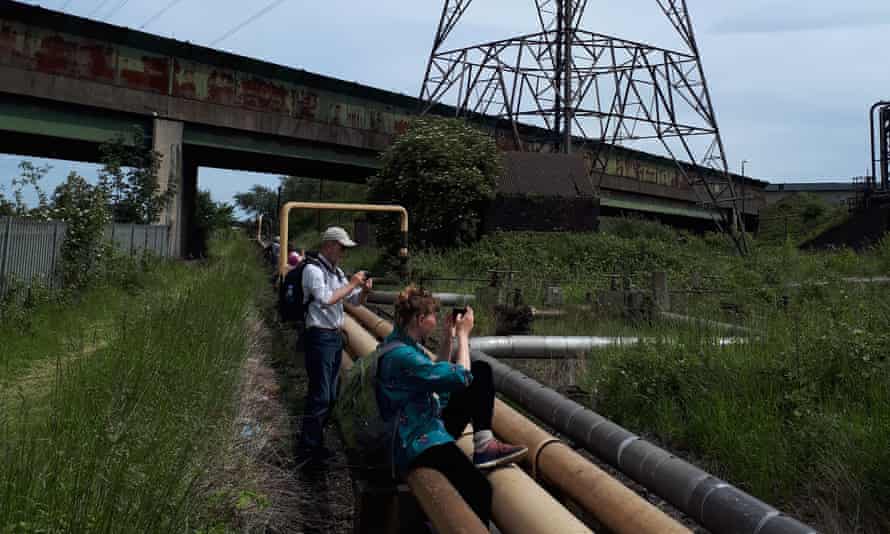‘Monument to hard graft’: a post-industrial walk on Teesside’s Black Path
On a sluggish June Sunday again in 2019, I walked the historic Black Path route, from Middlesbrough to Redcar, by the guts of commercial Teesside. I used to be a part of a “sketch-crawl” organised by Black Path Press, a group guide publishing undertaking within the South Bank district of Middlesbrough. Artist Philip Boville had been invited alongside to provide insights into industrial places alongside the best way. The walk was coordinated with River Tees Rediscovered and Groundwork, whose skilled steerage opened up a a part of my native space I would by no means have found. I packed a rucksack with sketchbook, pens, pencils and a picnic, and made my manner to South Bank station, a half-hour walk from the beginning of the trail, behind the Navigation Inn in Middlesbrough.
Adam Phillips and Deborah Bower from Black Path Press had heard conflicting tales about the place the trail’s place to begin could be, however felt the station was the best entry level for guests. As Adam identified, the southern aspect of the gorgeous Transporter Bridge, by the River Tees, would make a dramatic entry level for these unfamiliar with the realm. Perhaps one of many causes for this uncertainty is that the trail itself fluctuates from patchy Tarmac to worn “desire paths” by the grass, even veering off on to the Trunk Road, a mundane twin carriageway, for half a mile or so. Grimy metal slag, a byproduct of steelmaking, was used for the foundations for the trail, and, mixed with the buildup of commercial cinders underfoot, helped give it its title. The slag has helped to fertilise the earth across the path, permitting the pink-bloomed crown vetch, native to the Mediterranean, to thrive on this unlikely setting.
At South Bank station, there’s a skeletal iron footbridge over the prepare tracks. Generations of metal and ironworkers have clanked throughout this bridge initially and shut of every day, and trains proceed to rush by on the road beside a lengthy stretch of the trail. Before the steelworkers, the Black Path was utilized by sailors to attain their ships on the ports of Coatham, Dabholm, Cargo Fleet and Newport; in these days the trail was referred to as the Sailor’s Trod. Families additionally used the route to escape the South Bank terraces and walk to the seashore at Redcar. Earlier nonetheless, it is said that English rebels camped right here through the Norman conquest, attempting to outrun William the Conqueror and his military. Today, the crowds have been changed by the occasional canine walker or rambler on what can be the final leg of the Teesdale Way, signalled by a steel signal close to the station entrance.
The additional away from the station we acquired, the extra remoted it felt. Wildflowers sprouted in all instructions, and the occasional lichen-covered pipe caught out its lengthy limb from the empty fields behind the fence. Once, these pipes carried fuel and oil to the steelworks, and you’ll nonetheless see “oxygen” or “blastfurnace gas” stencilled on them in block capitals. Overhead wires make the air tingle above tangled brambles.

The Dorman Long steelworks tower has lain dormant for a few years; its imposing, concrete coal bunker, emblazoned with the corporate title, is a brutalist obelisk – its stained, beige husk a reminder of enterprise and entropy of lives that had been productive but robust. For guests who solely need a brief walk, it lies shut to the station, seen in all weathers.
Beyond the ever extra complicated community of pipes that start to crisscross the Black Path lies the Teesport Container Terminal. Steps lead up to a bridge, permitting a wonderful view of the thriving import and export interchange in all its complicated glory. Aside from the numerous cranes on the horizon, there’s a lot to soak up, and I’d like to return and make some visible notes on this explicit spot. It seems like there’s much less time to seize the older trade earlier than it disappears from view, which is what we concentrated on for our sketch stops.

About a quarter of the best way by my sketch-crawl, the trail narrowed and my unsuitable footwear sank in a marshy quagmire. The wall that borders this part of the Black Path had, at the moment (in 2019), ghostly impressions of assorted waterbirds painted on to the brickwork a while in the past, light like a vibrant switch on a baby’s forearm. These work have since been renewed, and the Teesside Archives web site reveals that they had been “created by Joe Parkes, who worked in the shunting yard at Lackenby from 1976 to 1985. Joe would occupy any spare time during shifts making art that would eventually be seen by tens of thousands of people on their daily commutes … He even got a round of applause one day when the train broke down opposite his painting wall.” The Black Path has captured the creativeness of different inventive individuals within the space too, every fascinated with the historical past and the best way nature rubs shoulders with trade.
At artwork faculty, I used to be drawn to the shapes and strange juxtapositions present in industrial landscapes, making sketches and oil work of my native space. Artists like Len Tabner, who collaborated with photographer Ian Macdonald on the guide Images Of The Tees, had been nice examples for Teesside artwork college students like myself. Indeed, artist Phillip Boville, who led the walk that day, had contributed to the inventive lifetime of the area along with his large-scale 1975 Teesside Steel Mural, seen by hundreds of tourists to the Lackenby medical centre over a 40-year interval. After our walk, Black Path Press created a vibrant art work, Notes On The Black Path, that includes practically 50 bespoke poster designs (together with one with new phrases by me) all laid round a lyric by the South Bank-born songwriter Vin Garbutt. Also in 2019, The Secret Gallery appeared on a footbridge, with art work by 10 native artists, organised by South Bank’s Saabat Gallery.

Since that sunny June day, I’ve been again to the trail, in mild autumn drizzle, to movie parts of the video for Maxïmo Park’s Child Of The Flatlands. I discovered myself impressed to write in regards to the “edgelands” exemplified by the Black Path, and by the outdated ICI works that pepper the uniform fields on the japanese fringe of my dwelling city of Billingham in County Durham. As the tune tells it: “Industrial turrets were our fairytale castles,” and, in a spacious musical clearing in the course of the tune, I sing “Nature always wins”, which ended up being Maxïmo Park’s new album title. It felt pertinent to these uncared for areas the place city meets nation, and nature reclaims its native territory. It felt like this phrase might apply to a lot of the opposite private themes on the document – about parenthood, or coming to phrases together with your previous.
In some ways, as somebody who has moved away – I remained in my college metropolis of Newcastle upon Tyne – I’m compelled to confront my youth and private historical past after I return to Teesside. Throughout my Black Path walk, I believed in regards to the industrial heritage of the area, imagining my very own father as an apprentice welder on the shipyards, transferring on to his time on the ICI chemical plant; how we might drive by the place he labored, at nighttime, getting back from a household tenting vacation, dazzled by the lattice of lights connected to varied angled pipes and tall chimneys. Famously, this was the panorama that impressed Ridley Scott’s Blade Runner, and Aldous Huxley’s Brave New World, lasting inventive testaments to its ceaselessly maligned qualities. The billowing steam launched from gigantic, hyperboloid cooling towers stays a hanging function of the skyline. These, together with the smoking chimneys, are why we Teessiders are sometimes referred to as Smoggies!

On my unique walk, we finally emerged from the lengthy grass of Coatham Marsh and ascended a hill adjoining the hamlet of Warrenby. We discovered ourselves overlooking a distinctive vista of lengthy steel chutes main to fading warehouses. At the centre of all of it had been the tangled, outstretched arms of the disused Redcar Steelworks’ blastfurnace, and behind us was the North Sea in all its glory – the contrasting visible components stirring up a combination of feelings, by no means thoughts the layers of reminiscence embedded throughout the route.
Which makes these industrial remnants splendid for partial upkeep and care, reasonably than wholesale regeneration. The native Tory mayor, who has earmarked the outdated steelworks for demolition, might not agree, nor maybe would some native individuals, who affiliate the works with decline and harsh working circumstances reasonably than the commercial power it as soon as was. However, there’s a persevering with native debate about what occurs to the location, with a totally costed plan to protect the Dorman Long tower and Redcar blastfurnace. At the trade’s peak, there have been 91 fiery blastfurnaces inside a 10-mile radius, and I imagine saving the final remaining furnace as a everlasting monument to hard graft and enterprise would enrich the panorama for future generations.
My journey culminated in a stroll alongside Redcar seafront, previous the location of the attractive however now demolished artwork deco Regent Cinema. Strictly talking, it’s nicely past the top of the Black Path, however I couldn’t resist a go to to Pacitto’s ice-cream parlour. The enterprise was arrange by two Italian brothers who hitchhiked to the north-east from Italy on the flip of the twentieth century, initially beginning their enterprise in close by Stockton. Just a few of my companions joined me in ordering a lemon prime – lemon sorbet perched precariously atop a vanilla ice-cream – a native delicacy that jogs my memory of childhood seaside journeys, and a becoming reward for anybody finishing the Black Path.
Maxïmo Park’s newest album, Nature Always Wins, is launched right now on Prolifica Inc




